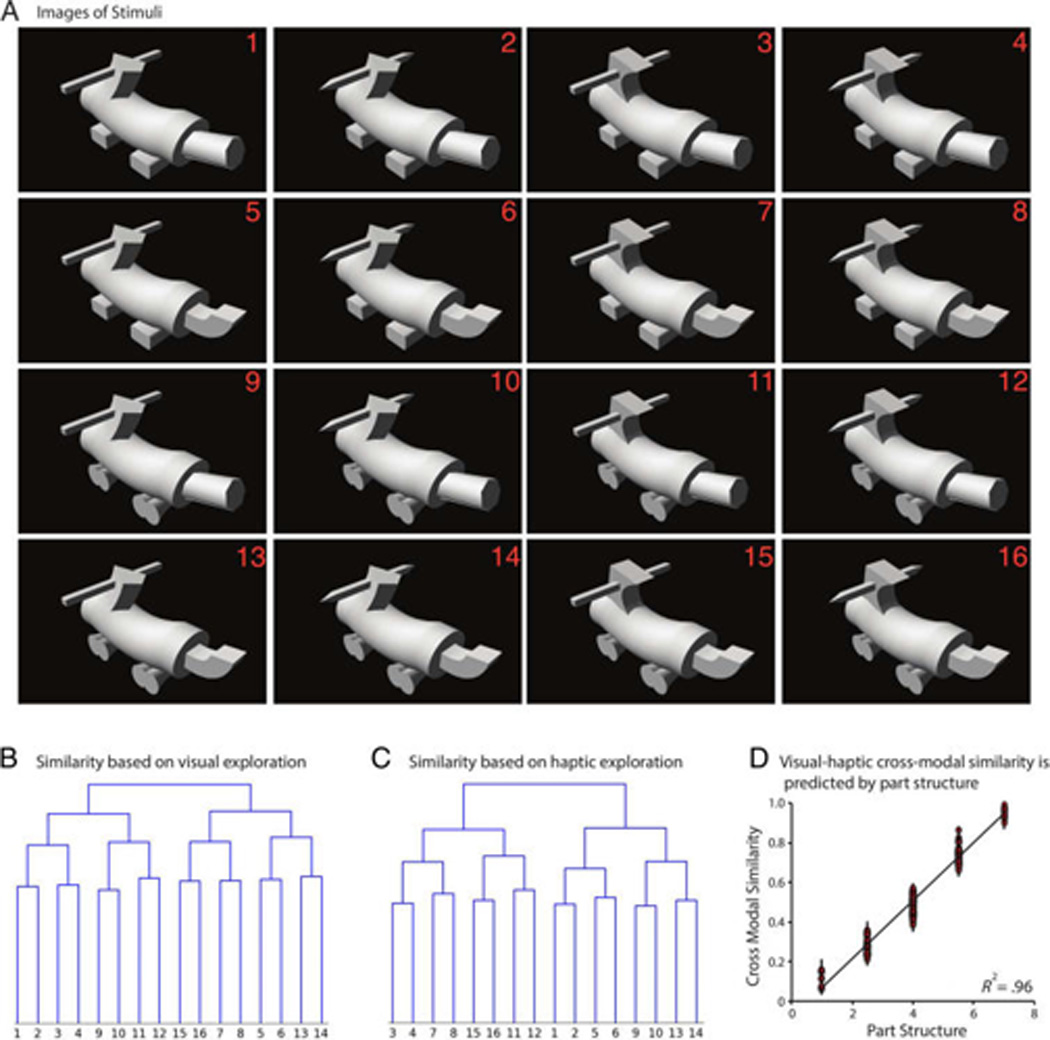Figure 2.

(A) Experimental stimuli used in Experiment 2. The stimuli are based on Fribbles (Tarr, 2003). Each object is made up of four components at four fixed locations. For each location, there are two possible values or parts (i.e., 24; hence 16 objects). (B) Results of agglomerative clustering applied to behavioral similarity data from the visual condition. In the behavioral experiment (Erdogan, Yildirim, & Jacobs 2015), participants either viewed or haptically explored a pair of objects and provided similarity ratings on a scale of 1–7. Similarity judgments are averaged across participants to get a condition level similarity matrix. (C) Results of agglomerative clustering applied to haptic behavioral similarity data. (D) Scatter plot of cross-modal behavioral similarity judgments versus similarities calculated from part structure. In the cross-modal condition, participants viewed one of the objects and haptically explored the other object. Similarities based on part structure are calculated by counting the number of shared parts between pairs of objects.
